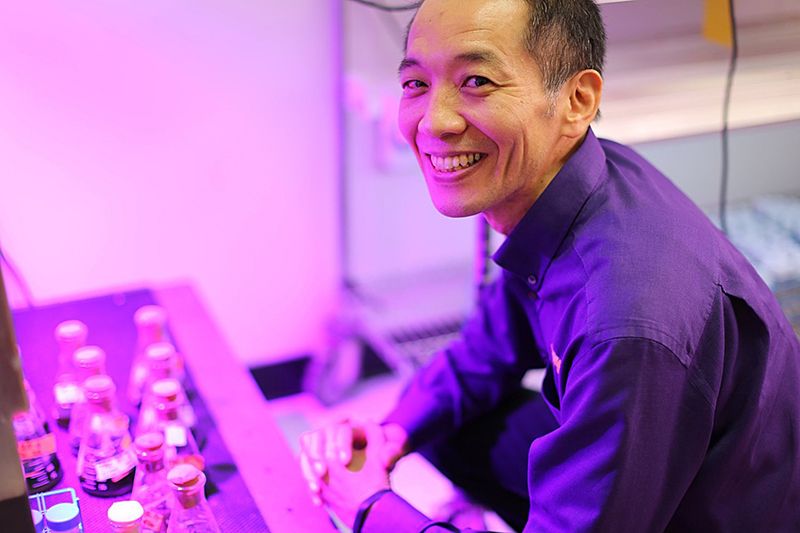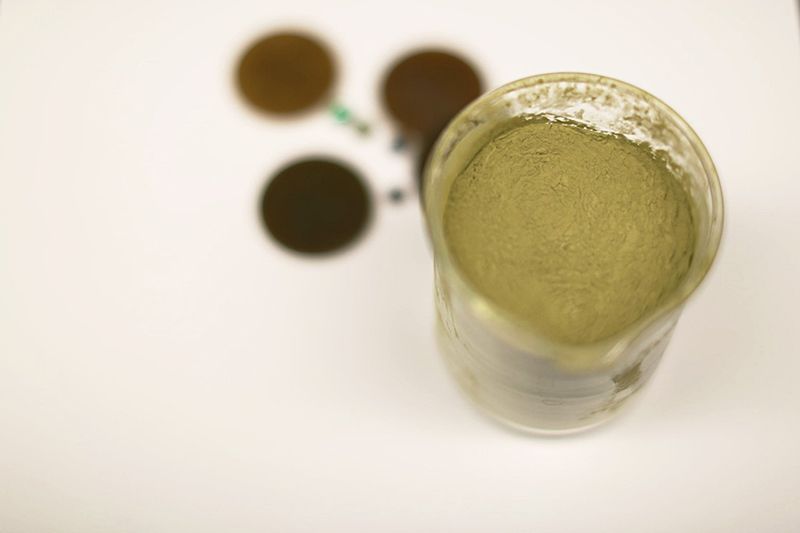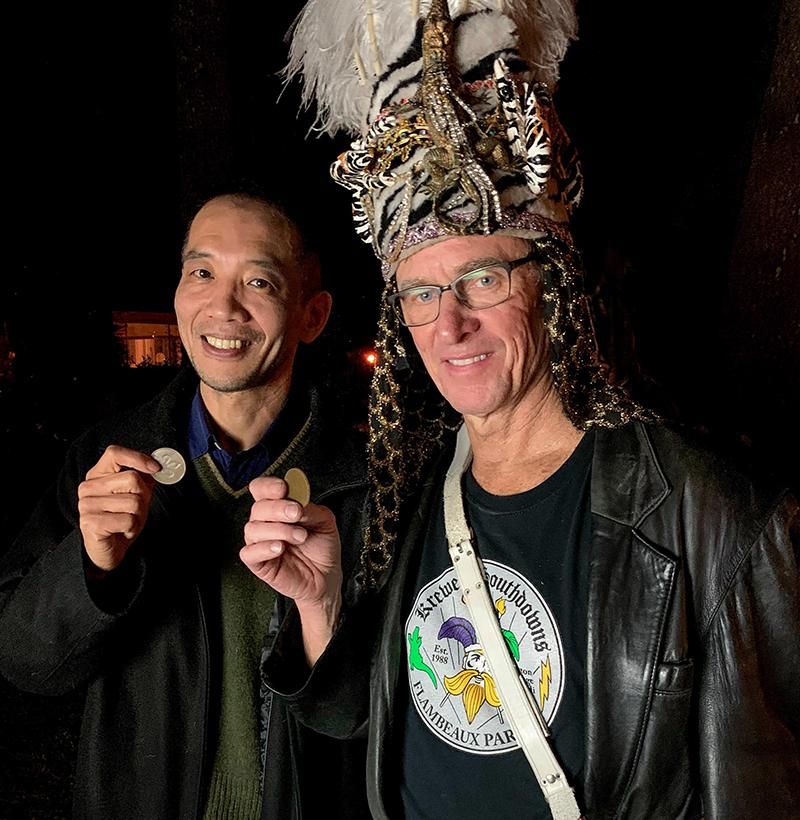Made From Microalgae, These Mardi Gras Beads Are Biodegradable
Louisiana State University molecular biologist Naohiro Kato is confronting plastic pollution one necklace and doubloon at a time
/https://tf-cmsv2-smithsonianmag-media.s3.amazonaws.com/filer/b1/41/b141057f-0ec3-4dd2-a091-d3560200b3f1/biodegradable_beads_and_doubloons.jpg)
Mardi Gras in New Orleans is a famously unholy mess. After the 2018 celebration, some wondered if it had gone too far. Apart from bacchanalian excess, the parade left behind 950 tons of debris in souvenirs, trash and beads, reported the Times-Picayune, with over 620 tons heading to landfills by mid-February. City crews after the holiday hauled up 46 tons of beads alone that clogged water catch basins across the city.
You could say the party is a microcosm of our global problem with plastics, with waste plastic growing in the world’s oceans, and landfills piling up with stuff that refuses to decompose. And the plastics industry continues to boom, spending an estimated $180 billion to build over 260 new plastic factories by 2025 in the United States alone, increasing plastic production by one third, according to biologist Susan Shaw, founder and president of the Shaw Institute. “It’s estimated we’re putting 8 million tons of plastics into the ocean every year,” she notes, “and it lasts for hundreds of years in the environment.”
With such concerns mounting, researchers are looking at alternatives, including “organic plastics” from plant materials that decompose. The technical challenge is complicated by an economic hurdle: making plant-based plastics that are both biodegradable and commercially viable.
Naohiro Kato, a molecular biologist and professor at Louisiana State University, is starting with biodegradable Mardi Gras beads.
Problem-solving at the Molecular Level
Brightly colored beads were not on Kato’s original career trajectory. He was headed for food science research when he received his PhD from Hiroshima University, with a goal to tackle the problem of global food security. Most of Kato’s research centers on medical applications like nano-pharmaceuticals for treating cancer and cardiovascular illness. But since moving to Baton Rouge in 2005, he also loves Mardi Gras.

Coming to Louisiana State from Rutgers was a big culture shift—as big as his move from Japan to New Jersey in the late 1990s. “People were so generous, so down to earth. People had no rush,” he explains. Like, none. In a Baton Rouge checkout line, he could wait five minutes while the clerk chatted with a customer.
“I was like, Why doesn’t the line move?” Kato admits. Gradually he acquired the local need to talk about weather, food, life.
His first summer there, Katrina slammed the Gulf. In the storm’s wake, his neighborhood suffered a week-long blackout. No electricity or water. Neighbors pulled together to eat. “Just come over,” people said. “So we did barbecue almost every night.”
“That experience actually made us feel more comfortable about living in Louisiana,” Kato says.
He and his family came to appreciate local traditions. “That started me looking more carefully at the culture we have here,” he says. “Here people talk about food, and what to eat tonight, and Mardi Gras is coming, and the parade route.”
Mardi Gras in Baton Rouge is more low-key than in New Orleans, but the party’s waste is an issue across the state. Afterward you see beads everywhere, Kato says, “caught in tree branches, electric lines and in drainage ditches.”
At a party, Kato got talking with a documentary filmmaker, David Redmon, whose film Mardi Gras: Made in China traced the problematic path of Mardi Gras beads. Kato left the party thinking, “We can do better. Why don’t people use biodegradable Mardi Gras beads? That should be a way to go.”
Invention by Accident
Not long after that, Kato and his students were working with algae for medical applications when an accidental discovery yielded an important puzzle piece.
One of his students had the task of checking the lab three nights a week to move test tubes of microalgae from the centrifuge to the freezer. “One night he forgot,” Kato says.
The next morning, Kato opened the lab to find a large glob of algae gathering oils on the bottom of the centrifuge. This, he saw almost immediately, could form a key ingredient for globular bioplastic beads.

Kato’s team started exploring growing microalgae for beads that would biodegrade. They could harvest the microalgae from pond surfaces in Louisiana, which has the natural advantage of plentiful sunlight. Kato has applied for a patent for his method, which involves mixing the microalgae with chemicals to oxidize compounds in the algae and foster cross-linking so they stick together. He applies heat and pressure to advance the cross-linking, followed by a drying period.
To test the water of the market, Kato spoke with Mardi Gras krewe leaders. A number, including his local krewe of Southdowns, found the idea of reducing their plastic footprint appealing.

It appealed to others in the industry too. Bill Horner, CEO of Totally Green Bottles, a maker of compostable bottles internationally, says Kato’s innovation “is extremely important. I can’t applaud him enough.”
For Horner, the gold standard for sustainable plastics is certifiable compostability, confirming how quickly the material breaks down. “It has to do with the overall carbon footprint,” he says. (Based on initial experiments, Kato estimates the current version of the beads degrade in one to two years, in both soil and water.) Horner adds that once Kato refines the recipe for making the bioplastic beads, as well as doubloons, on a commercial scale, “he’ll look left and right, and see where it can work in another way.” New opportunities will, no doubt, become clear.
The Hurdle of Scale
Kato and his team are well aware of the challenges before them. Fundamentally, the cost of production is a big hurdle: about ten times higher than for regular plastic beads. Buyers willing to pay a premium for sustainability can help to bridge that gap. But the rest of the difference may require some kind of cross-subsidy or synergy with other products. Kato is exploring possibilities with his health industry colleagues making nutraceuticals that also use microalgae.
“With bioplastics, cost and scalability are the main challenges,” says Horner. Part of the process is convincing the market to take a long view. Accounting for the hidden external costs of plastic pollution, health effects and clean-up helps make the argument for a price premium on beads that won’t clog municipal drainage systems and landfills.
“There are so many people now conscious of the plastic problem, you don’t have to be an environmentalist to get it,” Horner says. “We’ve watched the plastic crisis get worse every year.”
Susan Shaw would prefer options that avoid plastic altogether, but agrees that microalgae-based products, like seaweed-based materials, hold promise. “We have to get sales up for this all to work,” she adds.
For now, Kato is gearing up to make 3,000 of the necklaces for next year. For that amount, he needs a pond the size of a football field. And he’s testing the market with krewes and retailers. The question he hears most often is, “Can you get us the colors?”
“We’re working on that,” he says, as they develop the next-generation bead recipe.